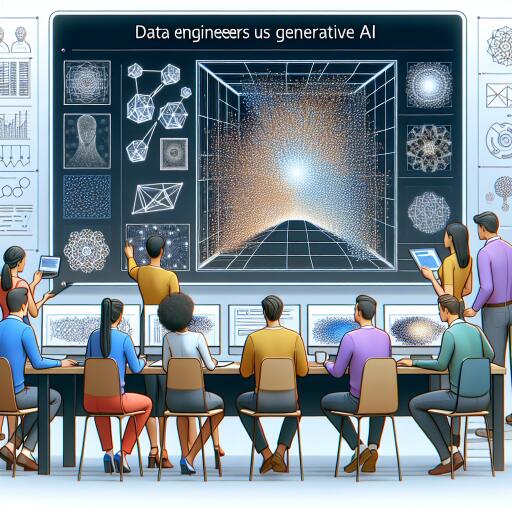Top Ways Data Engineers Can Leverage Generative AI
In the era where data is king, data engineers are the stewards of digital treasure troves, ensuring the smooth flow of data for insightful analysis and informed decision-making. The emergence of generative artificial intelligence (AI) has presented these engineers with a groundbreaking toolkit to refine data processes and spearhead innovations. This piece delves into the various methodologies data engineers can employ generative AI to revolutionize data management and analytics.
Enhancing Data with Synthetic Generation
Generative AI technologies, such as generative adversarial networks (GANs) and variational autoencoders (VAEs), afford the creation of synthetic data mirroring the intricacies of real-world information. Data engineers can harness these tools to generate copious amounts of realistic data for model training, testing, and addressing the scarcity of data. This approach can bolster machine learning model performance, mitigate overfitting, and amplify the resilience of learning algorithms.
Expanding Datasets through Data Augmentation
Data engineers can also explore data augmentation, which involves embellishing existing datasets with synthetic instances to boost their diversity and volume. Techniques such as image morphing or text manipulation can expand datasets, thereby enhancing the generalizability of models, curbing bias, and uplifting the efficacy of machine learning deployments.
Anomaly Detection for Enhanced Accuracy
Through generative AI, engineers can adeptly pinpoint anomalies within data, such as fraudulent transactions or unusual system behavior. This precision in anomaly detection facilitates quicker and more accurate responses to potential issues, safeguarding the integrity of data systems.
Refining Data Quality with Denoising Techniques
Generative models can sift through noisy data to unveil and reconstruct clean data. Especially in scenarios laden with sensor data or unstructured inputs, generative AI can significantly elevate the quality and reliability of the data, enriching downstream analysis and decision-making processes.
Facilitating Seamless Domain Adaptation
Through domain adaptation, data engineers can utilize generative AI to simulate data from a target domain, thereby easing the transition of models across different data realms. This capability addresses domain shift problems, ensuring models remain robust and accurate regardless of the operating environment.
Imputing Missing Values for Complete Datasets
Generative AI’s prowess extends to discerning patterns within data, allowing for the accurate imputation of missing values. This critical application ensures the completeness and integrity of datasets, paving the way for more reliable analyses and insights.
Beyond Traditional Boundaries
As generative AI tools evolve, they increasingly undertake complex tasks such as schema generation, automated debugging, and predictive maintenance. These advancements streamline operations across the data value chain, including data governance, ensuring operational excellence and compliance.
Conclusion
The advent of generative AI heralds a transformative era for data engineers, offering sophisticated tools to refine data workflows, enhance data quality, and innovate within the field of data management and analytics. By embracing synthetic data generation, data augmentation, anomaly detection, denoising, domain adaptation, and data imputation, data engineers can surpass traditional challenges, unlocking new dimensions of data-driven decision-making. As generative AI continues to evolve, its integration into data practices promises to catalyze unprecedented levels of efficiency, accuracy, and innovation.








